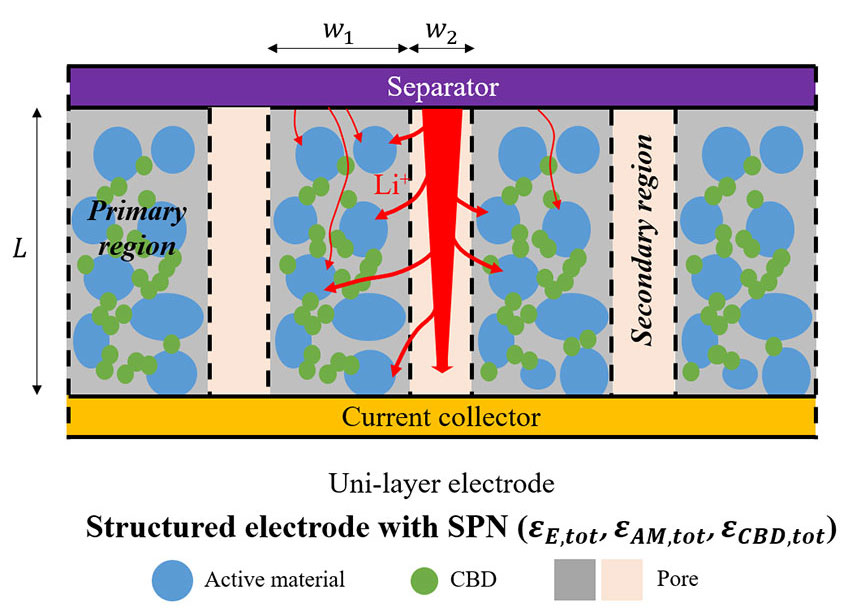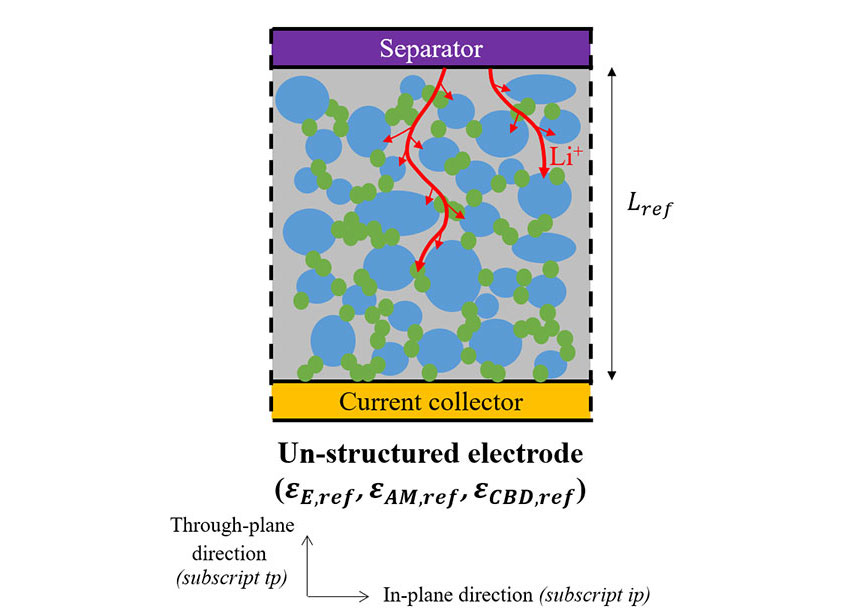Lithium-Ion Battery Secondary Pore Network Design Optimization Analytical Diffusion Model
Use the Lithium-Ion Battery Secondary Pore Network (SPN) Design Optimization Analytical Diffusion Model to improve battery performance and enable fast charging.
The model quantifies the impact of SPN, also called dual-pore network, on electrolyte ionic diffusion considering various pore channel geometries. It compares reference (i.e., without SPN) and structured (i.e., with SPN) electrodes at identical gravimetric and volumetric specific theoretical capacity. It also provides optimal design parameters according to different optimization objectives, all aimed to balance the improved structured electrode through-plane diffusion with the degraded porous matrix in-plane diffusion.
The model requires MATLAB (tested with 2019b version) with no additional toolbox. The MATLAB live editor hides code, leaving visible only text, equations, figures, and results. View a screenshot of the model interface.


(Left) Schematic representation of a structured electrode with secondary pore network, and (right) a reference (or baseline) electrode.
Model Download Instructions
Publications
Enabling Fast Charging of Lithium-Ion Batteries through Secondary-/Dual-Pore Network: Part I - Analytical Diffusion Model, Electrochimica Acta (2020)
Enabling Fast Charging of Lithium-Ion Batteries through Secondary-/Dual-Pore Network: Part II - Numerical Model, Electrochimica Acta (2020)
Contact
Share
Last Updated Dec. 6, 2025
